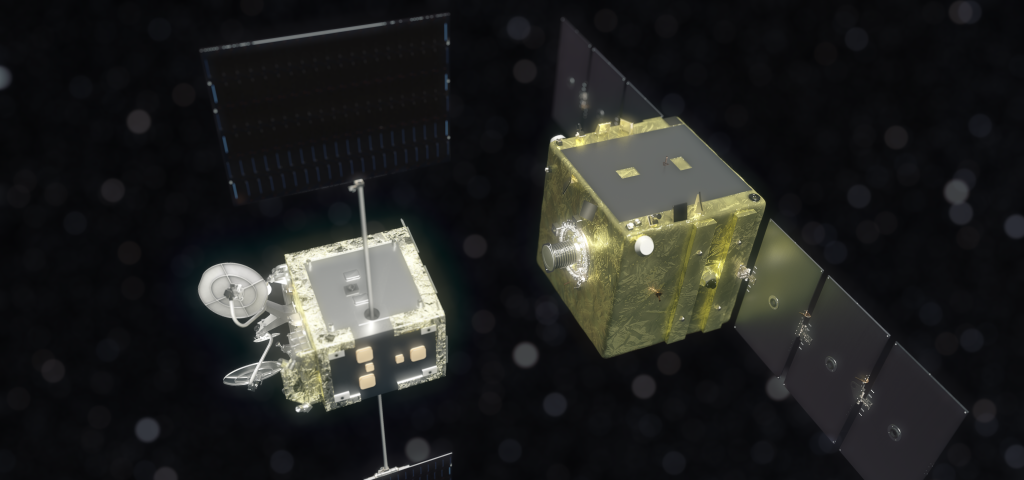
Clearing the Path: The Imperative for Space Debris Collection
Space exploration has always fascinated humanity. However, our ventures into space have left an unintended consequence: space debris. An ever-growing cloud of defunct satellites, rocket booster stages, and fragments poses a significant threat to future space exploration.
In this blog post, I will discuss the importance of space debris collection and explore the innovative solutions being developed to clear the path for future space endeavors.
The Looming Threat of Space Debris
Space debris, also known as “space junk”, encompasses a wide range of man-made objects orbiting Earth. These include defunct satellites, discarded rocket stages, and even minuscule fragments resulting from collisions or explosions. With an estimated 36,500 debris objects larger than 10 cm and countless smaller fragments orbiting uncontrollably at 28,000 km/h, the problem is becoming increasingly urgent.
The presence of space debris poses numerous risks. First and foremost, it endangers operational satellites, including those vital for communication, weather monitoring, and navigation systems. Collisions with space debris can cause catastrophic damage, rendering valuable space assets useless.
Moreover, the cascading effect of collisions, known as the “Kessler Syndrome”, could create a self-sustaining chain reaction, making certain orbits unusable for generations.
The Need for Space Debris Collection
To ensure the long-term sustainability of space activities, proactive measures for space debris collection are imperative. By actively removing debris from critical orbits, we can minimize the risks associated with collisions and protect future space missions.
Effective space debris collection is vital for maintaining the functionality of current satellites and creating a safe environment for future space exploration.
Collaboration and Regulation
Addressing the space debris problem requires international collaboration and robust regulatory frameworks. Governments, space agencies, and private companies must work together to develop standards for satellite design, responsible space operations, and mandatory debris mitigation measures.
Encouragingly, organizations such as the United Nations Office for Outer Space Affairs (UNOOSA) are actively engaged in promoting space debris mitigation guidelines.
The International Organization for Standardization even published in May 2023 a new standard ISO 24113:2023, entitled “Space Systems – Space Debris Mitigation Requirements” to be used in the context of Space Traffic Management (STM).
Innovative Solutions
De-orbiting and Re-entry
One approach to space debris collection involves actively removing defunct satellites and discarded rocket stages from orbit. By equipping satellites with de-orbit mechanisms or utilizing dedicated robotic missions, these objects can be guided to burn up during re-entry into Earth’s atmosphere, reducing the amount of debris in space.
Capture and Removal
Another promising approach involves capturing and removing debris directly from space. Concepts like harpoons, nets, and robotic arms are being explored to capture larger debris objects.
Additionally, experimental technologies such as electrodynamic tethers and ion beams are being developed to capture smaller fragments by utilizing electromagnetic forces.
Before capturing the space debris, they must be identified in a cluttered and complex space environment.
As the embedded computing resources are limited, the combination of 3D simulation with the creation of a digital twin is a great asset to optimize the computer vision algorithms and to anticipate their execution timing constraints due to the high orbital speeds.
Active Debris Removal (ADR) Missions
A more comprehensive solution involves dedicated ADR missions. These missions employ spacecraft equipped with advanced sensors and capture mechanisms to actively seek out and remove debris from specific orbits.
There are even companies targeting the ambitious goal of removing several space debris in a single mission. It is the case of Astroscale ELSA-M (End of Life Service by Astroscale - Multiple).
Astroscale’s servicer spacecraft embeds a radiation-hardened onboard computer running Astroscale’s software applications on Wind River’s VxWorks, responsible for the computer vision processing, not only for the space debris detection and precise tracking but also for the autonomous navigation and rendezvous operations.
Astroscale's vehicles are equipped with cameras and sensors producing data requiring real-time fusion, enabling the spacecraft and servicer to make informed decisions and execute precise maneuvers during rendezvous and docking operations as explained in an Astroscale YouTube video.
The ELSA-M command and control system requires a prominent level of precision for its robotic operations, including maneuvers with the retired client satellites.
Astroscale can rely on VxWorks’s real-time capabilities and reliability to ensure the success of their active debris removal mission.
Conclusion
Space debris poses a significant threat to the future of space exploration, but innovative solutions are emerging to address this challenge head-on. Through active space debris collection initiatives, we can pave the way for safer and more sustainable space activities.
By harnessing technological advancements, fostering collaboration, and establishing regulations, we can ensure that the vastness of space remains open for exploration and future generations.

*Image credit: Astroscale
About the author:
Nicolas Van Spaandonck is a Senior Field Application Engineer at Wind River

